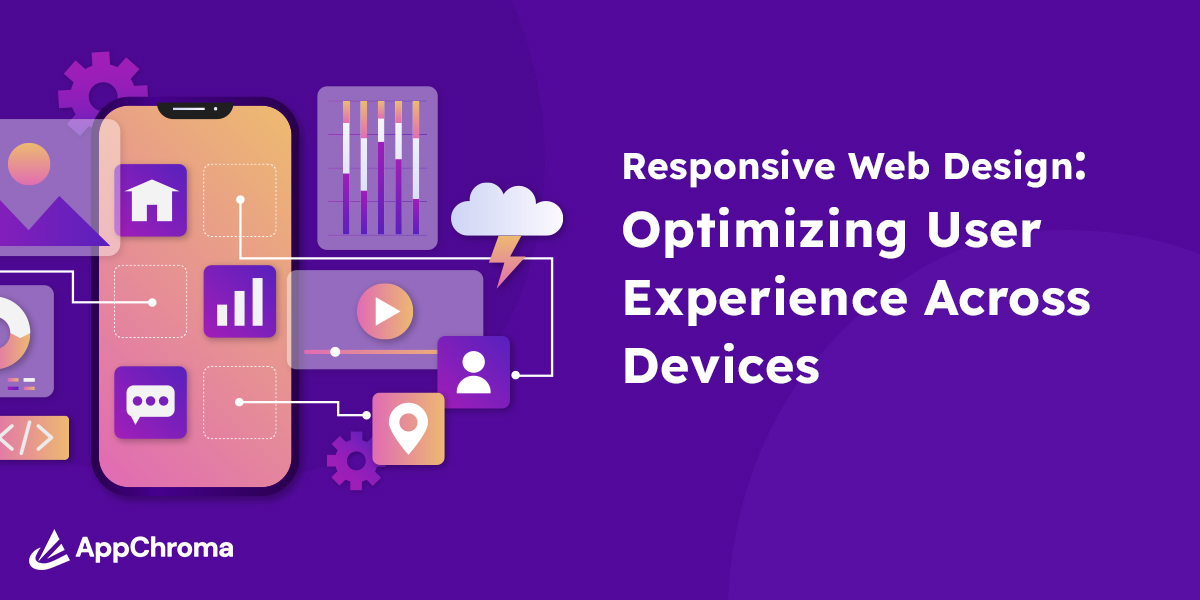Let’s Learn about the importance of responsive web design in enhancing user experience across various devices. Tips and best practices for a mobile-friendly website.
In today’s digital landscape, where people access websites on multiple devices with different screen sizes, responsive web design has become an important aspect of creating a successful online experience. Responsive web design is an approach that aims to provide an optimal viewing and interaction experience across a wide range of devices, from desktop computers to smartphones and tablets.
Importance of Responsive Web Design:
Responsive web design is essential as it ensures that websites are accessible and user-friendly regardless of the device being used. With the increasing use of smartphones and tablets, a significant portion of website traffic comes from mobile devices. Without responsive design, websites may appear distorted, be difficult to navigate, or require excessive zooming and scrolling, leading to a frustrating user experience.
By implementing responsive design techniques, websites can adapt and adjust their layout, content, and functionality to suit the specific device and screen size being used. This adaptability enhances usability, readability, and overall user satisfaction, making it easier for visitors to engage with the content and achieve their goals on the website.
Furthermore, the responsive design contributes to a positive brand image and credibility. When a website looks polished and works seamlessly across all devices, it instills trust in users and portrays a professional and forward-looking brand.
Optimizing user experience across devices:
Optimizing the user experience across all devices is the main objective of responsive web design. This involves creating a consistent and consistent experience for users, regardless of the device they use to access a website.
With responsive design, the website’s layout and design elements automatically adjust based on the device’s screen size and capabilities. This optimization ensures that the content is presented in an optimized manner with appropriate font sizes, spacing and images that fit the screen. Navigation menus may also change to accommodate touch interactions on mobile devices, making it easier for users to browse and explore the site.
By optimizing the user experience across devices, responsive web design enables seamless transitions between different platforms. Users can start browsing a website on their desktop computer, continue browsing on their smartphone while on the go, and pick up where they left off on a tablet at home, all without any disruption to the experience Without it. This flexibility and consistency contributes to user satisfaction and encourages engagement and return visits.
Planning to Build a Custom Web App Solution?
Our experienced web app developers will help you to validate your ideas.

Responsive Web Design and its core principles:
Responsive web design is an approach to web design and development that aims to create websites that optimize and respond seamlessly to different screen sizes and devices. It involves designing and coding websites in a way that ensures an optimal viewing and interaction experience for users on a wide variety of devices, including desktops, laptops, tablets, and smartphones.
The core principles of responsive web design include:
1. Fluid Grid: Instead of a fixed-width layout, responsive design employs a fluid grid that dynamically adjusts and scales based on screen size. This allows the content to proportionally fill the available space, providing a consistent and visually pleasing experience.
2. Flexible Images and Media: Responsive design uses technologies such as flexible images, which automatically resize and adapt to fit the screen without losing its aspect ratio or quality. This ensures that images and media elements display properly on a variety of devices.
3. Media Queries: Media Queries are CSS techniques that are used to apply specific styles based on device features or screen size. Using media queries, designers can optimize the presentation of content, adjust layout, and optimize user experiences for different devices.
The importance of building a website that adapts to different screen sizes:
Creating a website that adapts to different screen sizes is important in today’s digital landscape for several reasons:
1. Ubiquity of mobile devices: With the increasing use of smartphones and tablets, websites must cater to the diverse range of devices users use to access the Internet. By designing responsively, websites can provide a consistent and user-friendly experience across a variety of screens.
2. Enhanced User Experience: Responsive web design ensures that users can easily navigate and interact with a website, regardless of the device they are using. This eliminates the need for excessive zooming, scrolling or resizing, resulting in a smooth and intuitive user experience.
3. Better SEO Performance: Responsive design can have a positive impact on the search engine optimization (SEO) efforts of a website. Since search engines prefer mobile-friendly websites, having a responsive design can contribute to better rankings in search engine results pages (SERPs) and increased organic traffic.
4. Cost and Time Efficiency: Creating a separate mobile version of a website can be time consuming and expensive. Responsive web design eliminates the need to maintain multiple versions of a website, streamlining the development process and reducing maintenance efforts.
Benefits of responsive design for both users and website owners:
1. Enhanced User Satisfaction: Responsive design ensures that users get a consistent and optimal experience, regardless of the device they are using. This leads to increased user satisfaction, higher engagement and lower bounce rates.
2. Enhanced Reach and Accessibility: Responsive websites are accessible to a wider audience as they can be accessed on a variety of devices. This inclusivity improves the website’s accessibility and allows it to cater to users with different preferences and technical abilities.
3. Better Conversion Rates: When users have a seamless experience on a website, it increases their chances of conversion, such as making a purchase, filling out a form or subscribing to a newsletter. Responsive design contributes to better conversion rates and a positive impact on business goals.
4. Simplified Maintenance: Managing a single responsive website is more efficient than maintaining multiple versions for different devices. Updates, bug fixes and content changes can be applied once and reflected immediately across all screen sizes, reducing maintenance efforts and ensuring consistency.
As technology continues to evolve, user expectations for a seamless experience across devices are at an all-time high. Prioritizing responsive web design is important for businesses and website owners whose goal is to provide an exceptional user experience. By adopting responsive design principles and techniques, you can ensure that your website looks and functions equally well on smartphones, tablets, laptops, and desktops.
Remember that a responsive website not only increases user satisfaction but also has a positive impact on search engine rankings, as search engines like Google prefer mobile-friendly websites. By investing in responsive design, you demonstrate a commitment to meeting your users’ needs and improving their overall experience.
In conclusion, responsive web design is not only a trend but also a necessity in today’s multi-device world. By applying responsive design principles, you can optimize the user experience across devices, increase your website performance, and meet your audience’s expectations. Make responsive web design a priority, and remember to constantly educate yourself and stay up to date on the latest advances in this ever-evolving field.
Let’s design our web application together
In the article, you learned about prioritizing responsive web design is important for businesses and website owners whose goal is to provide an exceptional user experience. Along with this, you must have understood many things that you need to consider before planning to design and develop a web app.
In fact, our web designers and developers are adept at providing complete web development services to multiple business sectors. Check out the recently developed web application solutions by our web developers.


